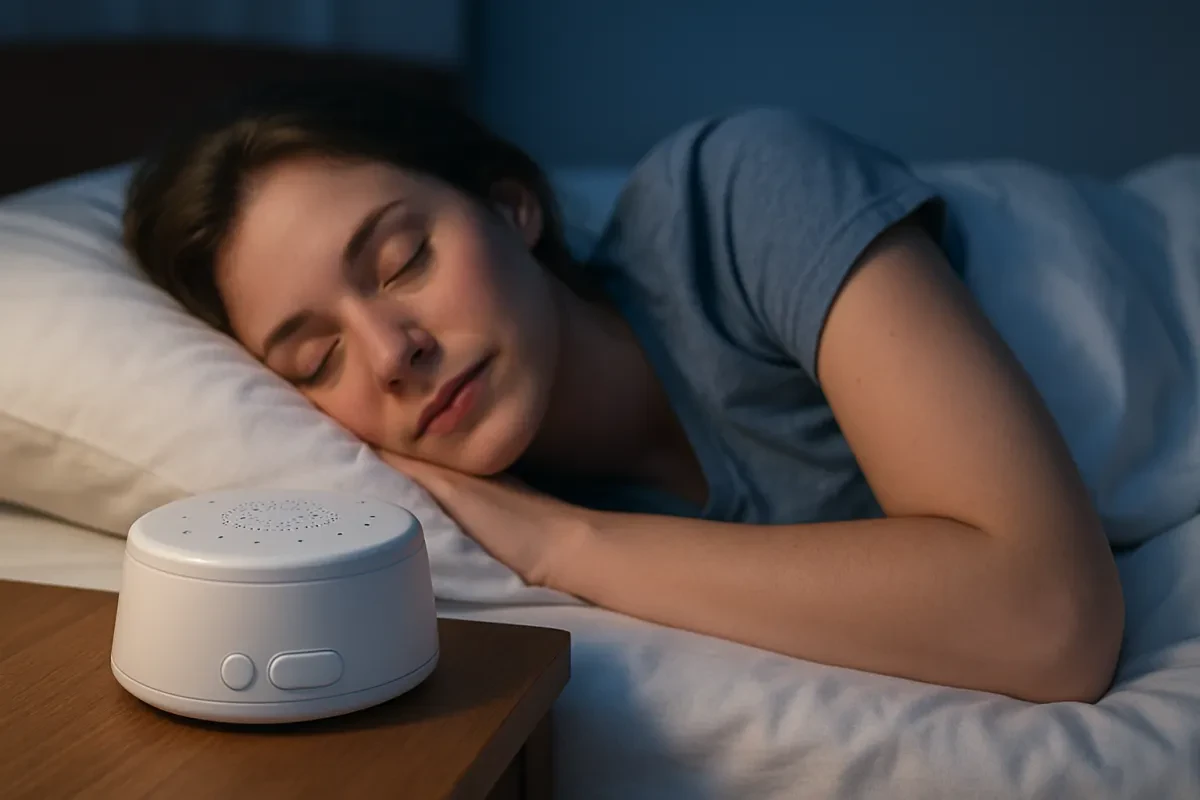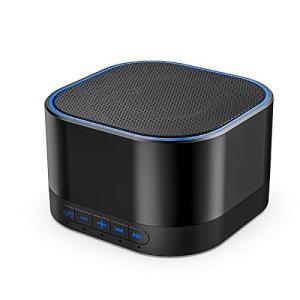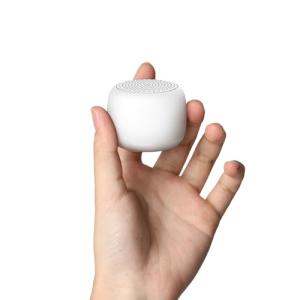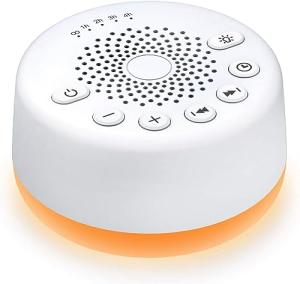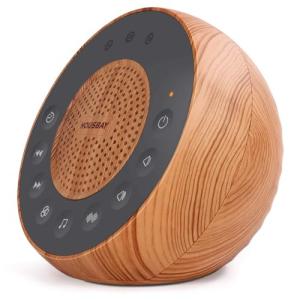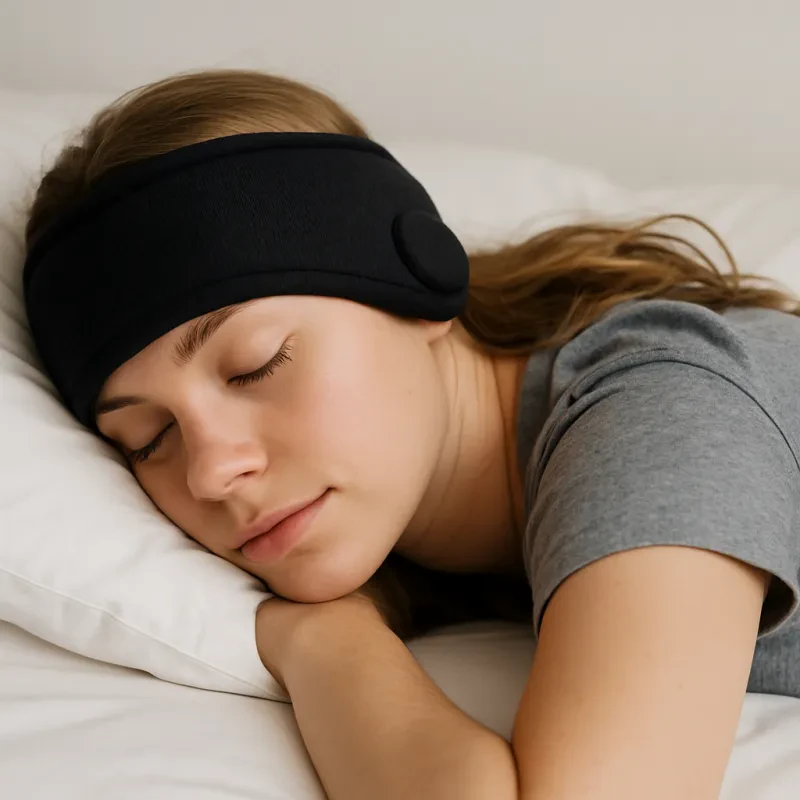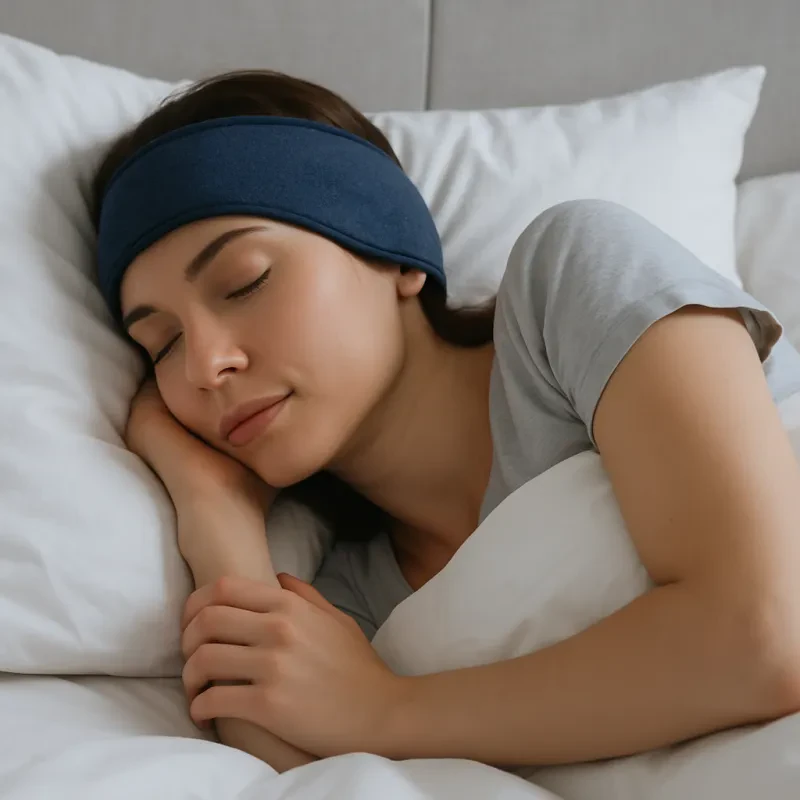If you’re on the hunt for the best white noise machine for sleeping, you’re in for a treat. White noise machines create a soothing sound that can help drown out distracting noise and make it easier to drift off. Here’s a roundup of some top picks that’ll help you catch those z’s.
1. Marpac Dohm Classic White Noise Machine
This classic model is a favorite among many. It uses an actual fan to produce a soft, natural sound. No weird looping noises here! You can adjust the tone and volume to fit your room perfectly. It’s simple, reliable, and gets the job done.
2. Hatch Restore
The Hatch Restore isn’t just any white noise machine. It doubles as a smart alarm clock and offers a range of sounds, including white noise, rainfall, and even soothing melodies. You can control everything from your phone, making it super convenient if you like customizing your sleep environment.
3. LectroFan High Fidelity White Noise Machine
This one’s packed with options. The LectroFan can generate various fan sounds and white noise options. If you’re picky about sound, you’ll love being able to choose between so many different styles. Plus, it’s compact and travels well, so you can take it wherever you go.
Choosing the best white noise machine for sleeping boils down to your personal preference. Whether you want something simple, like the Marpac Dohm, or a feature-packed device like the Hatch Restore, there’s a perfect match out there for you. Happy sleeping!
How White Noise Helps You Sleep Better?
If you’ve ever fallen asleep in the back of a car, dozed off on a train, or drifted into slumber mid-flight despite cramped seats and chatter around you, then you’ve already experienced one of the most powerful effects of ambient sound: its ability to help the brain switch off and rest. White noise machines, at their core, are trying to recreate this same effect — not by putting you to sleep like a magic switch, but by making it easier for your brain to fall into and maintain the natural rhythm of sleep.
To understand how that works, we first have to consider what sleep really is. Falling asleep isn’t just about closing your eyes and lying still. Your brain goes through a delicate dance of activity, shifting from busy, alert brainwaves during the day (like beta and alpha waves) into slower frequencies as you relax — theta waves as you drift off, and eventually delta waves during deep, restorative sleep. These slow delta waves are especially important because that’s when your body repairs itself, your brain consolidates memories, and your nervous system resets for the next day.
Now, here’s the problem: your brain is always listening. Even when you’re asleep, your ears stay active, scanning the environment for anything unusual. That’s why sudden noises — a dog barking outside, a neighbor’s footsteps, a car door slamming — can jolt you awake or nudge you out of deep sleep without you even realizing it. These are called micro-awakenings. You might not fully remember them, but they interrupt the flow of sleep and prevent you from staying in that precious delta-wave state for long enough.
This is where white noise machines come in. What they do is deceptively simple, but very effective: they create a steady, predictable wall of sound that gently masks the random, unpredictable noises that would otherwise disturb you. Think of it like this — instead of sleeping in a silent room where every little creak of the house or distant siren stands out, you’re now surrounded by a smooth cushion of sound that makes those disruptions less noticeable. Your brain, in turn, feels safer and more settled. It’s not being startled or drawn back to high-alert mode every few minutes.
In practical terms, the sound a white noise machine produces contains a blend of all audible frequencies played at the same intensity. This gives it a kind of “shhh” or static-like quality — similar to the sound of a fan, radio static, or wind in the trees. Because this sound is uniform and continuous, it fills in the silence and smooths out environmental changes that your ears would otherwise latch onto. The result? Fewer sleep interruptions, less tossing and turning, and a much better chance for your brain to naturally slide into the deeper phases of sleep without being kicked back up into lighter stages.
Interestingly, there's also a psychological side to it. For many people, turning on a white noise machine becomes part of a nightly routine — a ritual that signals to the brain: “it’s time to sleep now.” Over time, this consistency becomes a cue, just like brushing your teeth or dimming the lights. That association alone can help reduce the time it takes to fall asleep. Researchers call this “sleep onset latency,” and in several studies, people exposed to white noise in noisy environments fell asleep significantly faster than those without it. One study even showed a reduction in wake time during the night by as much as 38%, simply by introducing white noise to counteract environmental sounds.
Now, you might wonder whether these machines actually influence the brain’s sleep waves — specifically delta waves. That’s a popular idea, and it’s partly inspired by the way people tend to fall asleep easily in places with a lot of low, consistent ambient sound — like the hum of an airplane or the rumble of a train. It’s true that these kinds of environments can encourage relaxation and may support the brain’s natural ability to enter slow-wave sleep. But scientifically speaking, a white noise machine doesn’t directly generate or trigger delta waves. Rather, it creates a calm, non-distracting environment that gives your brain the chance to reach those deep, restful stages more easily — and most importantly, to stay there once you get there.
What matters more than the technicality is the real-life effect: you sleep better. You fall asleep faster. You wake up less often. And you’re less likely to be dragged out of deep sleep by a sudden sound that your brain interprets as a possible threat.
It’s worth mentioning that while white noise works well for many people, it’s not a one-size-fits-all solution. Some prefer other “colors” of sound, like pink or brown noise, which are softer and lower in frequency. Others may find nature sounds — rainfall, ocean waves, or distant thunder — more soothing. The key is finding a sound that feels comfortable and non-distracting to you. The goal isn’t to drown your room in sound, but to create a stable background that helps your mind go quiet and your body follow.
So, in the end, white noise machines don’t force you to sleep — but they do something just as valuable: they create the kind of safe, predictable environment your brain needs to let go. They reduce interruptions, signal your system that it’s bedtime, and give you the best shot at drifting into that peaceful, delta-rich sleep your body craves.
And in a world where true silence is rare, that’s a pretty powerful tool to have by your bedside.
Features to Look for in a Machine
When shopping for the best white noise machine for sleeping, you want to keep a few key features in mind. Not all machines are created equal, and the right one can make a world of difference in your sleep quality.
First up, sound options. Look for machines that offer a variety of sound profiles. Some folks prefer traditional white noise, while others might like gentle rain or ocean waves. Having multiple options lets you pick what works best for you and keeps things fresh night after night.
Next, consider portability. If you travel frequently or want to move the machine from room to room, a compact and lightweight design is a must. Many of the best white noise machines for sleeping are easy to pack and don’t take up much space on your nightstand.
Also, check out the controls. You want something user-friendly. Simple buttons or a clear display make it easier to adjust the volume or change sounds without fumbling around in the dark. Timers are another great feature, letting you set it to turn off automatically after you drift off.
Lastly, think about sound quality. A good machine should produce rich, soothing sounds without any static or interruptions. Great audio can truly enhance your relaxation and help you enjoy deeper sleep, which is what we all want, right?
Our Favorite Picks for Every Budget
If you’re on the hunt for the best white noise machine for sleeping, you’ve come to the right place! We’ve rounded up some fantastic options that fit every budget, so you can find the perfect one for your needs. Check these out!
Budget-Friendly Option: The LectroFan Micro2 is a solid choice without breaking the bank. It’s compact and portable, making it a great travel buddy. You can choose from several sound options, including fan sounds and white noise, to help you drift off peacefully. Perfect for those who want a reliable white noise machine without spending a fortune!
Mid-Range Favorite: The Marpac Dohm Classic offers a simple, natural sound that many users love. This isn’t your average white noise machine; it has a built-in fan that creates a real rushing air sound, which many people find calming. Plus, you can adjust the tone and volume to fit your preference. Great for creating a cozy sleep environment!
Premium Pick: If you’re ready to invest a bit more, check out the Hatch Restore. This isn’t just a white noise machine; it also doubles as a smart sleep assistant! It features a customizable sound library and a beautiful sunrise alarm function. You can control it through an app, making it super convenient. Perfect for those who want the best white noise machine for sleeping, plus some extra sleep-enhancing features.
